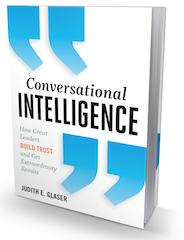
Authors, artists, writers, theologians and spiritualists have long known the heart is more than just an organ pumping blood to the brain. Expressions like "I have a broken heart over you" are more than literary phrases. We know from the research of neuroscientists and neuropsychologists -- as well as people in fields we never knew had any interest in this subject -- that the heart knows much more than we thought about relationships, about feelings, and about emotions.
The heart is how we connect to others. We now know that the heart emits energy more powerful than the energy emitted by the brain. When people are within ten feet of each other, they pick up the other's energy fields -- and begin to connect. If others are feeling sad or angry, our heart picks up their energetic field and the process of "interpreting" what this means takes place first at the chemical level, and then at the higher brain levels as we put "words" to our feelings and emotions.
When we have conversations with others, more information is exchanged because words too contain information that is "felt" by the heart, head and body. It's quite fascinating. When people get into sync with each other -- when they feel they are on the same page -- their heart waves become coherent and there is a feeling of total connectivity -- like "I really get you," or "I understand you." We now have instruments to measure a person's heart coherence during conversations with others, enabling us to actually see and experience coherence.
The heart not only emits electrical energy, it is a chemical storehouse. It has nodes that can read levels of chemicals like testosterone (higher leading to more aggression), and oxytocin (leading to feelings of love or connectivity). The heart is the largest producer of oxytocin -- even more so than the brain. We used to think only women produced oxytocin but we now know that men also produce it. Oxytocin is a bonding hormone. Some call it the "love" hormone or the "cuddle" hormone.
When we are feeling connected, there are elevated levels of oxytocin, which rush through the body/blood stream sending chemical messages to collaborate or connect. When the opposite occurs, and we sense fear from someone, cortisol levels increase -- elevating a state of fear.
The amygdala is located in the lower, more primitive part of the brain, where its center registers the tenor of a potential social interaction. There is always a play going on between approach and distance from others.
For us to be in love, or for us to experience heartbreak -- there is a conversation going on chemically and neurochemically that leads us to "know" how our heart feels -- thus how we feel. Now, we can also see through fMRI's (functional magnetic resonance imaging) that there is a parallel between how our heart feels and how our brain looks. When we say we feel affection towards someone or we connect deeply with them, there is now actual physical evidence that the brain patterns of these two people start to mirror each other.
When two people are angry at each other, we can read the coherence (or lack of it) in their heart waves. The heart responds more quickly than the neocortex and prefrontal cortex (newer brain) so it "knows where we stand with others." There is so much more we now know about the heart-brain connection that is not made up. It has been proven true!
Judith E. Glaser, CEO Benchmark Communications, Inc. & Chairman of the Creating WE Institute, and author of Conversational Intelligence: How Great Leaders Build Trust and Get Extraordinary Results (BiblioMotion) October 2013. Visit us at www.creatingwe.com; www.conversationalintelligence.com.
